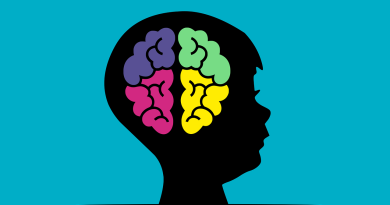How To Help A Child With Dyslexia At Home
How to help a child with dyslexia at home can be extremely frustrating. Especially for a child that is trying to read and comprehend the written word. Reading is difficult enough as it is let alone adding additional hardships to the reading experience.
Although, dyslexia is not only a reading difficulty but a spelling, phonics and comprehension struggle. In my classroom, I have seen first hand the issues that can occur when a child is dealing with dyslexia.
The good news is with the proper interventions and skills a child can learn ways to help mediate the difficulties that come with a disability.
As a classroom teacher, we are trained and have resources to help guide our students in the classroom but as parents, it might seem like a daunting task to try to help your child at home with their dyslexia struggles.
This will be your guide to How To Help A Child With Dyslexia At Home.
For more great information check out the Best Seller: Overcoming Dyslexia: A New and Complete Science-Based Program for Reading Problems at Any Level
Click the link for Amazon pricing and rank.
What is Dyslexia?
One of the major misconceptions of dyslexia is that it is a language-based disability with the only warning sign of the disability being the reversal of letters.
While in many cases it does involve the reversal of letters and sometimes numbers it also encompasses the difficulty in dealing with the distribution and patterns of speech sounds.
The definition of dyslexia in the literature:
“Dyslexia is a specific learning disability that is neurobiological in origin. It is characterized by difficulties with accurate and/or fluent word recognition and by poor spelling and decoding abilities. These difficulties typically result from a deficit in the phonological component of language that is often unexpected in relation to other cognitive abilities and the provision of effective classroom instruction. Secondary consequences may include problems in reading comprehension and reduced reading experience that can impede the growth of vocabulary and background knowledge.”
(Lyon, Shaywitz, & Shaywitz, 2003, Annals of Dyslexia, p. 2)
How To Help Your Child At Home
1. Use Positive Reinforcement At Every Possible Moment-
Positive reinforcement is using positive emotions or actions to reinforce the desired behavior that makes it more likely that the desired behavior will occur again in the future.
Children in general need and crave any positive reinforcement but when a child has a special need and is struggling to master a particular academic strategy it is even more crucial.
There are many great parenting strategies. To learn another parenting strategy for younger children click on the link to get more information about the pros and cons of swaddling.
Giving your child positive praise throughout the learning process will help your child remember the learning experience as a positive one even during difficult times.
Using positive reinforcement when your child remembers a site word, uses a reading strategy or starts homework on their own will help that positive action occur more often in the future.
Positive reinforcement can be as easy as telling your child “Great Job”.
While that works well on occasion it is always best practice to give specific praise to the child knows exactly what they did right.
This will also help ensure that the specific actions that were being praised will more likely happen again because the child is given detailed praise.
An example of this would be instead of saying “Great Job!” you could say ” Great Job, remembering that it is homework time!” or ” I really like the way you took your time when reading that paragraph”.
In the classroom, I spend most of my day looking for ways to give specific praise when they earn it. Seeing the smile on their face when I catch them doing something right or working hard at something makes giving positive reinforcement really fun.
As a parent, you will notice the same. Start off by praising as many things as possible to encourage them to continue. As you are further into the process start praising specific actions that you know will help your child in the future and help them become more successful.
Positive reinforcement can also come in the form of rewards. When your child finishes their extra sight word lesson that you threw in on top of their other homework without complaining rewarding them with some extra outside time or their favorite treat shows the child that it was really worth all the trouble and worth doing again.
2. Read To Your Child Every day-
When your child is struggling with reading, comprehension or decoding text they can miss all of the adventure, wonder, and amazing stories that there are to offer.
This is often because due to their disability they may only be able to handle short choppy phonetic text that may not appeal to them.
While it is extremely important to have children read at their own level in order to maximize learning and minimize frustration it is just as important for the parent to open their child’s eyes to the joys of reading through read-alouds.
Reading aloud to your child every day expands their comprehension without having to deal with trying to sound out, decode or interpret the text which may be frustrating for them.
They can just enjoy the story and characters which enhances their enjoyment and their love of reading.
You can also use read-aloud programs on their tablet or computer.
When your child is able to follow along with the text while the words are being read aloud it gives your child the ability to focus on the meaning of the words and gives them an opportunity to use their imagination.
Another benefit of reading to your child is if the book is what other children are reading it allows them to connect with other children and get into books that their peers enjoy as well. It also will give you the opportunity to explain certain topics as you see fit and give further details on the subject that come up in the literature.
Both my wife and I are school teachers and have first-hand experience of how reading to children in the classroom makes a difference.
In addition, we read to our children every night and it is a cherished routine that will hopefully improve their love of reading.
3. Work With Your Children On Sight Words-
Many times children with dyslexia have a hard time decoding sight words because they are just that- Site words.
Sight words don’t follow the regular spelling patterns which are why they most often have to be memorized.
Putting site words on 3×5 cards really helped my daughter start learning her sight words. Show your child the sight word and read it out loud.
Have them analyze the word by having them look at the beginning, middle and end of the word.
This will help them identify the features of the word and in turn help solidify the word in your child’s memory.
Having your child write out the sight words on paper is another way to help your child remember their site works. Sight words are categorized by age or grade level and can easily be found online.
Here are examples of kindergarten sight words- all, am, are, at, ate, be, black, brown, but, came, did, do, eat, four, get, good, have, he, into, like, must, new, no, now, on, our, out, please, pretty, ran, ride, saw, say, she, so, soon, that, there
4. Work On Phonological Awareness-
Phonological awareness is an individual’s awareness of the phonological structure, or sound structure, of words.
Working on Phonological Awareness sounds like a complicated task but in reality, it is just helping your child tune into the sounds of the spoken word.
Long before a child learns what the ABCs are and how to hold a book they are understanding that letters stand for different sounds.
As your child gets older they will start noticing that words can rhyme and how sounds can repeat themselves.
All of this has less to do the actual words but more so on the different patterns and sounds the words can make.
This is perfect for a child with dyslexia as they may have issues with words but work quite well with sounds.
Many times children with dyslexia have a hard time decoding rhyming and repetitive words as written text which is part of Phonological Awareness.
You can help your child at home by working with your child with words that rhyme or blend sounds together.
When you are in the car or at home you can point to different objects and have the child try to come up with a rhyming word.
You can do the same with blending works. Identify any object around you that can break down the blending sounds.
An example could be, you are in the car and you point to a passing tree.
You could say “hey, look a tree”. “Can you come up with a word that rhymes with tree” Hopefully they say “bee or free” but if not you can help them until they get more confident with the skill.
Repetition will help increase their success.
Another example is finding an everyday object at home or elsewhere and practice breaking down the sounds. You could say “B-oo-k”, and your child has to blend the words together and guess the word. This will reinforce the relationship between the word, its letters and the sounds they make.
By making Phonological Awareness a priority you can introduce or reinforce a skill that is at the core of reading success.
5. Use A Multi-sensory Approach When Working With Your Child At Home
Using multi-sensory instruction is a way of teaching that includes more than one sense during the activity.
A child with dyslexia can benefit from using techniques that involve sight, touch, hearing, movement and maybe even taste.
Giving your child the opportunity to use all their senses will improve the way your child reacts to the stimuli provided in the lesson at home.
Here are some examples of multi-sensory learning:
Sand or shaving cream writing– this multi-sensory approach allow your child to write or spell words in sand or shaving cream. It provides a different texture and they can see their efforts in a different medium.
Sandpaper letters- This also allows your child to trace letters made out of sandpaper giving them a different feel when tracing the letters.
Word building using magnets- This allows your child to see words and letters in 3D and you can differentiate consonants and vowels in different colors.
Spelling out words using crackers and spray cheese- this is a fun activity where you take crackers as the “paper” and the spray cheese as the letters. You can put one letter on each cracker to spell a word.
Using scented markers to write letters and words
Site word relay race- have a relay race where instead of passing a baton or slapping hands there partner shows them a site word before they can start their portion of the race.
Sound Tapping – using your fingers and thumb to separate a word. For example, the word “big” the child would touch their index finger to their thumb for the “b” sound, they would touch their middle finger to their thumb for the “i” and touch their index finger to their thumb for the “g”. This gives them kinetic differences for each sound or letter.
In the classroom, I can tell quite easily which child has some type of help at home. It is not always easy as our society is changing making it necessary for both parents to work or making it even more difficult if you are a single parent.
While it is a difficult thing to do, helping your child at home is one of the most important things you can do especially if they are struggling with a special need like dyslexia.
As I have said many times before ” the number one predictor of a child’s success in the classroom is the priority the parent puts on education”
Symptoms of Dyslexia
As I mentioned before, there are many other clues to help diagnose a child with dyslexia other than reversing letters.
Many of the symptoms that can occur are age-related and depend on the cognitive ability of the child.
Some children will successfully get passed a learning hurdle over time but if the problem is extending past the child’s normal learning milestones and is having an effect on their overall success it might be an indicator of a deeper issue.
For instance, if your child is reversing their letters or numbers that is actually normal (up to a certain age level). Although, if the issue continues then it might be time to double-check.
The link provided is a resource on how to identify age-related clues to dyslexia which is the first step on how to help a child with dyslexia at home.
How To Test For Dyslexia
It is important to test a child as soon as possible in order to start gathering information to identify some of the contributing factors that are causing your child difficulty.
Testing can help teachers and parents understand the child’s strengths and weaknesses. By understanding the child’s strengths and weaknesses the parents and teachers can help identify the best plan to facilitate successful learning.
Evaluating a child for dyslexia will not only identify the reasons for the difficulties but it can also rule out other reasons other than dyslexia-related issues.
Once your child had been evaluated, regardless of the outcome, a specialized plan can be created to help accommodate the needs of your child.
Parents and school staff can start helping the child based on their reading level.
Primarily it is a good idea to implement specific skills that have been shown by the evaluation process to be within the child’s strengths and eventually move into accommodating their weaknesses.
Another important reason to officially test a student for special needs is the documentation process that follows the child throughout their school career.
Once a special need is identified the IEP or Individual Education Plan can be started which is a federal document.
Many different needs fall within the guidelines of the IEP. An IEP will encompass the needs of a child with dyslexia, SLD (Specific Learning Disability), traumatic brain injuries, homebound students, ASD (Autism Spectrum Disorder), high functioning ASD (previously known as Asperger’s Syndrom) as well as many more.
For more information on Asperger’s or High Functioning ASD click on our guide to the 11 Ways To Help Children With Asperger’s (High Functioning ASD)
Once an IEP has been established this will help identify the accommodations that all school personnel and other professionals will use to help best facilitate the needs of the child.
Whether the child lives in Florida or across the nation in Alaska the IEP will stay with your child and they will continue to receive the help that is necessary.
Once you have decided that it is time to get your child assessed for dyslexia a qualified language professional will need to be sought after to do the evaluation.
This is different from an assessment to diagnose a special need like ASD which a specialized medical doctor is required.
This is due to the fact that dyslexia is not a special need that has a one size fits all determination. Interestingly enough, the standards and testing that are used to diagnose dyslexia can vary greatly from state to state and even from country to country.
The first place to get the ball rolling is to contact the school’s Special Education Needs Coordinator (SENCO) or ESE (Exceptional Student Education) representative.
School administered testing is usually the most economical and will include information from the teacher and other language development, processing and learning style information that has been collected.
Outside independent testing is a possibility but many times it can be quite expensive.
Diagnostic testing for dyslexia uses many different types of academic measures to help identify a specific need.
These tests can be quite long depending on the test, administrator and severity of the need being addressed. Testing can also be conducted based on an age range that correlates with the child.
Here are the many different types of testing that can be used to help identify dyslexia or specific learning disability :
- Clinical Evaluation of Language Fundamentals, Fourth Edition (CELF-5): This assessment was developed to identify, diagnose, and provide follow-up evaluation of language and communication disorders in children, adolescents, and young adults between 5 and 21 years of age. The test assesses language content and form in both expressive and receptive language modalities.
- Peabody Picture Vocabulary Test, Fourth Edition (PPVT-4): This is an individually administered test that measures the child’s receptive vocabulary. It is used for individuals 2 years old through adulthood.
- The Word Test 2: Elementary: This test investigates the child’s understanding of word relationships and how he/she stores, recalls and uses vocabulary. The results can be used to coordinate therapy and classroom objectives.
- The Diagnostic Assessments of Reading with Trial Teach Strategies (DAR-TTS): The DAR test is given to ages 5-adult to measure students’ strengths and weaknesses in key areas of student learning with reading, including print awareness, phonological awareness, letters and sounds, word recognition, word analysis, oral reading accuracy and fluency, silent reading comprehension, spelling and word meaning.
- Gray Oral Reading Tests, Fifth Edition (GORT-5): This is a test that measures oral reading rate, accuracy, fluency, and comprehension. GORT assists in the diagnosis of oral reading difficulties.
- Woodcock Reading Mastery Tests-Revised (WRMT-R): This test is used to assess basic skills in reading and comprehension. Its main purpose is to measure several important aspects of reading ability.
- Goldman-Fristoe Test of Articulation, Second Edition (GFTA-2): This is a norm-referenced test that focuses on the articulation of sounds by isolating a consonant in each word position (beginning, middle, and end).
- The Beery-Buktenica Developmental Test of Visual-Motor Integration, 5th Edition (Beery VMI): This test is given to children ages 2–18. It measures the extent to which the child can integrate their visual and motor skills.
This is just a few of the testing options available. Each state and county will have a preferred measurement and can vary greatly.
To research the many other different types of testing click on the link provided which will take you to the University of Michigan’s dyslexia help page which is an amazing resource delving into the world of helping children and adults with dyslexia.
Once you have taken the steps to identify the issues that your child is facing when it comes to reading, writing, comprehension or the many facets that can occur with dyslexia you can start helping your child at home.
Along with the help they are receiving at school this will only strengthen your child’s ability to be successful at whichever milestone they are striving to achieve.




